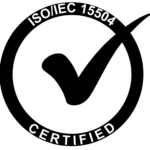- What we do
ENGINEERING
DIGITAL
INDUSTRIES
SOLUTIONS
- Who we are
- Resources
- Contact Us
 Globe | EN
Globe | EN

Objective: The aim of the project was to build a subsystem for cloud-based virtual reality (VR) to support next-generation VR applications on user devices. The primary focus was on addressing the challenges associated with cloud-based VR, particularly latency issues, by implementing prediction of head movements and warping stereo images to compensate for motion-to-photon latency.
Spanidea Contribution: Spanidea provided product engineering services for the development of the cloud-based VR subsystem. The key contributions included:
Business Benefits: The implementation of the cloud-based VR subsystem provided several benefits, including:
Tools/Frameworks Used: Spanidea utilized the following tools and frameworks for the development of the cloud-based VR subsystem:
This case study highlights Spanidea’s contribution to the development of a cloud-based VR subsystem. By effectively addressing latency challenges and leveraging prediction and image warping techniques, the subsystem enhanced the VR experience for users and positioned the client to support next-generation VR applications.

Get in touch with Spanidea to explore how our software solutions can propel your business forward.




